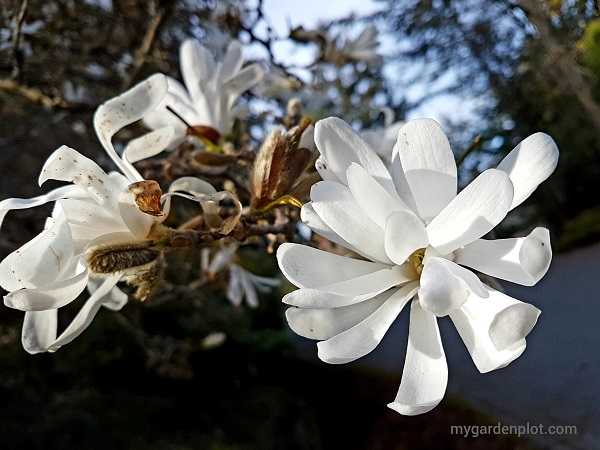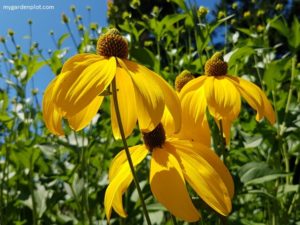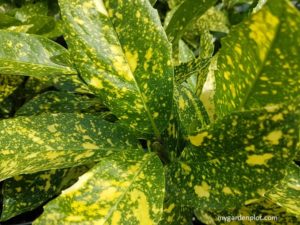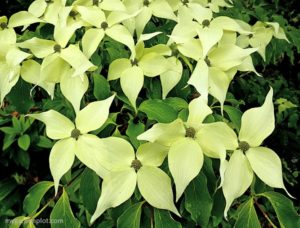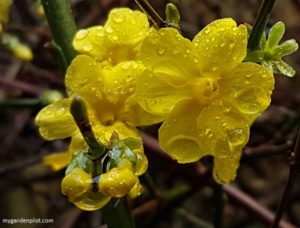Magnolia Stellata (Star Magnolia Tree)
Magnolia’s are one of the oldest trees going back millions of years. Native to East Asia, it was named ‘magnolia’ after the 17th-century well-known French botanist Pierre Magnol. There are many magnolia species, but the one I am writing about is the Star Magnolia (M. stellata), an early-blooming spring-flowering small tree. Here you will find information how to grow and care for your star magnolia, and tips on pruning.
The star magnolia is native to Japan. With a profusion of fragrant white ribbon-like flowers, it is one of the favourite of magnolias. This hardy magnolia grows to 3-6 m (10-20 ft) and is the perfect choice for smaller gardens limited in space. The most popular cultivars are Royal Star, Centennial, and the Waterlily. The Centennial is somewhat more cold hardy than the others and can be considered for zone 3.
Star Magnolia at a Glance
Type: Deciduous small tree or shrub
Location: Full sun / Part sun
Blooming season: Early to mid-spring
When To Prune: Mid Summer
Height and spread: 3-6m (10-20 ft) x 3-4.5 m (10-15 ft)
Plant Hardiness Zones: 4, 5, 6, 7, 8, 9
Where to Plant And How to Care For Star Magnolia Tree
Your star magnolia tree should be planted in moist but well-drained, slightly acidic, fertile soil. It will thrive in an east-facing location with morning sun where its roots are protected from hot summer afternoons. Consider a location that shelters it from from cold winds in winter.
They don’t like to have their roots disturbed so best not to plant under it where hoeing or forking could damage roots.
Like other magnolias, mulching every spring is beneficial. This also helps keep their roots cool during summer.
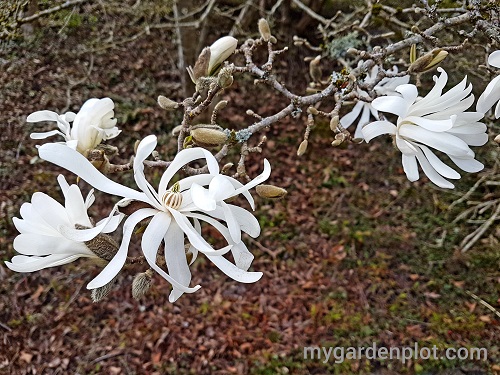
RELATED TOPIC: Buyer’s Guide On How To Choose Hand Pruners (Secateurs)
How To Prune Star Magnolia
The star magnolia is a slow-growing shrubby tree that needs little by way of regular pruning. However, a little light pruning can encourage flowering and help maintain a healthy tree with a balanced shape. It is rather low maintenance and you can leave alone for several years. Any pruning to control shape or to remove deadwood should be done in mid summer.
Tools Needed For Pruning Star Magnolia
Below is the list of essential tools needed to prune most trees including the star magnolia tree. Keep in mind that cuts on deciduous magnolias are generally slow to heal. Start soon after flowering and no later than mid-summer. Keep cuts to a minimum. The following links help narrow down the top-recommended products for pruning trees and shrubs:
- Pruners – Bypass pruners are the most popular choice for gardeners and a must in a pruner’s tool kit. Bypass means the blades pass each other in a scissorlike action providing a clean cut without splintering the stem’s edge. The anvil-type pruner, where the upper blade cuts against a lower flat edge, must always be kept sharp. Otherwise, it will crush the stem while trying to cut it. The best anvil-type pruners tend to be more expensive but worth it as they stay sharper for longer periods reducing the need to sharpen more frequently. Pole pruners are also very handy to have especially when pruning trees without a ladder.
- Long-handled Loppers – These are similar to pruners but with long handles. Loppers are heavy-duty and great for harder to reach stems that may also be too thick for pruners. Shop for an extendable lopper for the extra reach.
- Pruning Saw – Saws are useful for thick stems or branches that are growing close together. A Grecian saw or Japanese-blade pruning saw is a handsaw with a curved edge that works with a pull-stroke action. Great for those stems that pruners and loppers can’t cut. It will need a protective case. We also recommend a folding hand saw with a pull-stroke action for smaller gardens. It looks similar to a large pocket knife and works in the same manner as a Grecian saw.
- Garden Gloves – Optional, but gardening gloves help keep your hands clean and provide some protection. Fabric gloves with vinyl offer a good grip on the fingers and palm. Good for warmer weather. For more challenging jobs, a pair of suede or leather gloves go a long way. Not too comfortable wearing in hot weather, though.
RELATED TOPIC: Buyer’s Guide On How To Choose A Pruning Saw

